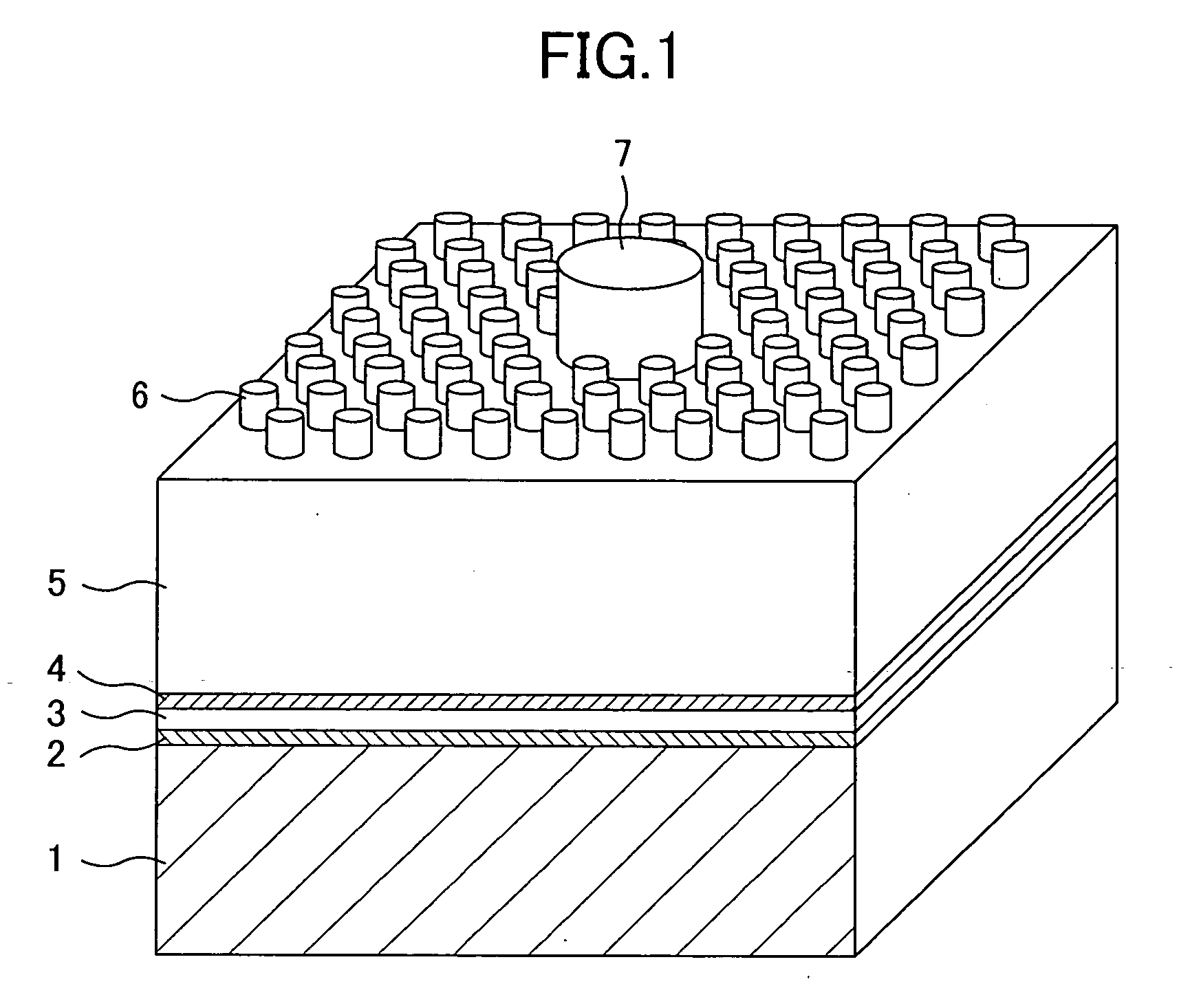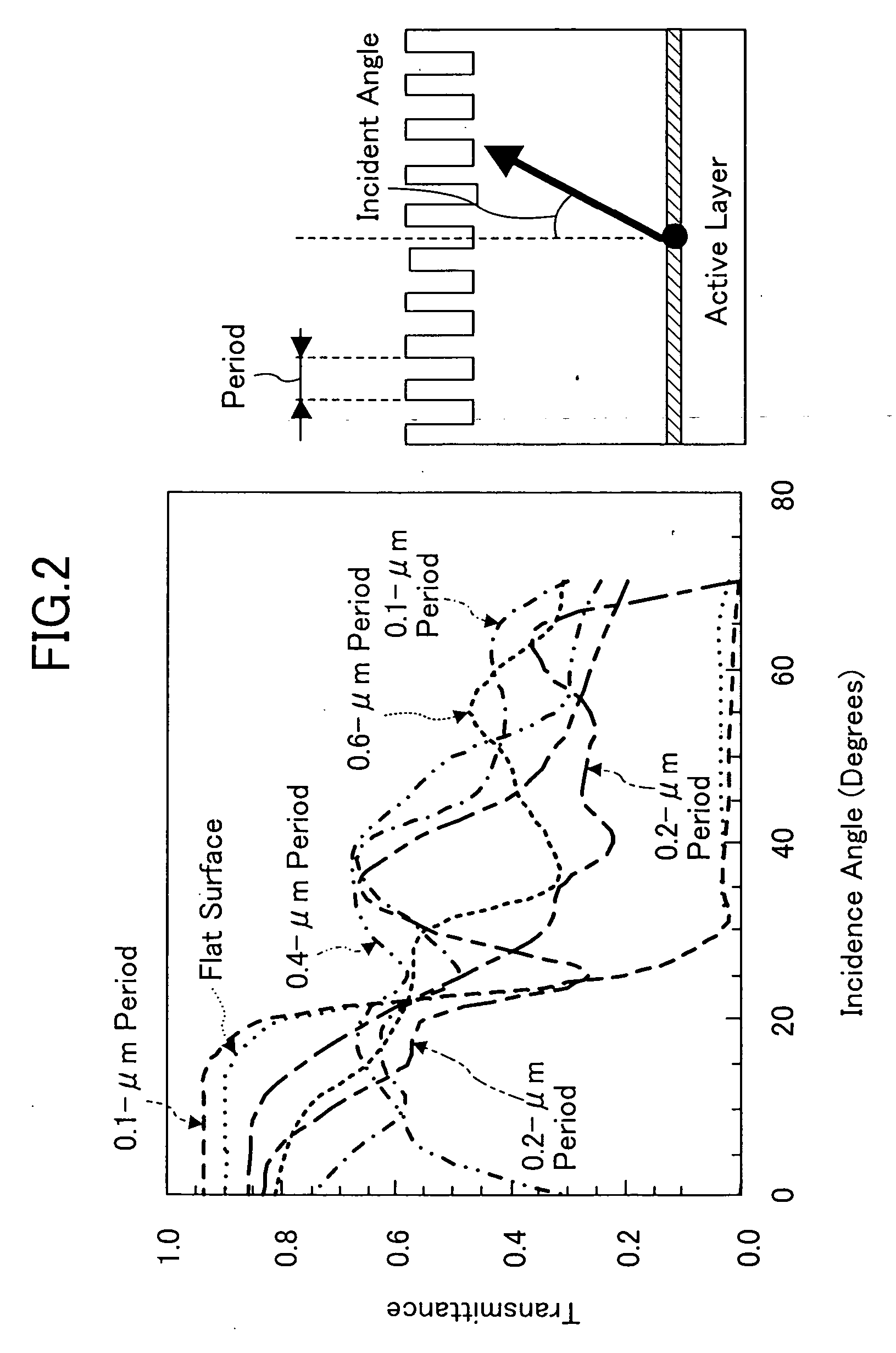Semiconductor light emitting element, semiconductor light emitting device, and method for fabricating semiconductor light emitting element
a light emitting element and semiconductor technology, applied in the direction of optical elements, instruments, optics, etc., can solve the problems of difficult formation of ohmic electrodes, reduced power conversion efficiency, and increased contact resistance, so as to facilitate micro-processing, facilitate micro-processing, and improve light extraction efficiency
- Summary
- Abstract
- Description
- Claims
- Application Information
AI Technical Summary
Benefits of technology
Problems solved by technology
Method used
Image
Examples
embodiment 1
Structure of Light Emitting Element
[0084]FIG. 1 is a perspective view showing a semiconductor light emitting element according to a first embodiment of the present invention. As shown in the drawing, the semiconductor light emitting element according to the present embodiment comprises: a p-type GaN layer (first semiconductor layer) 3 formed by epitaxial growth and having a thickness of 200 nm; a high-reflection p electrode (first electrode) 2 formed on the crystal growing surface (principal surface) of the p-type GaN layer 3, made of platinum (Pt) and gold (Au) which are stacked in layers, and having a thickness of 1 μm; an Au plating layer 1 formed on the lower surface of the high-reflection p electrode 2 and having a thickness of 10 μm; a non-doped InGaN active layer 4 formed on the back surface of the p-type GaN layer 3 and having a thickness of 3 nm; an n-type GaN layer (second semiconductor layer) 5 formed on the back surface of the non-doped InGaN active layer 4, having a b...
embodiment 2
[0126]FIG. 18A is a perspective view showing a semiconductor light emitting element according to a second embodiment of the present invention. FIG. 18B is a plan view when the semiconductor light emitting element according to the second embodiment is viewed from above. The semiconductor light emitting element according to the present embodiment is different from the semiconductor light emitting element according to the first embodiment in that a projecting two-dimensional periodic structure 18 formed in the upper surface (back surface) of the n-type GaN layer 5 is configured as polygonal pyramids.
[0127] As shown in FIGS. 18A and 18B, the semiconductor light emitting element according to the present embodiment comprises: the p-type GaN layer 3 formed by epitaxial growth and having a thickness of 200 nm; the high-reflection p electrode 2 formed on the crystal growing surface of the p-type GaN layer 3, made of platinum (Pt) and gold (Au) which are stacked in layers, and having a thick...
embodiment 3
[0143]FIG. 26 is a perspective view showing a semiconductor light emitting device according to a third embodiment of the present invention. The semiconductor light emitting device according to the present embodiment is a resin-molded semiconductor light emitting device obtained by mounting the semiconductor light emitting element according to the first or second embodiment on a mounting substrate 22 and then molding the periphery of the light emitting element with a hemispherical dome-shaped resin 23. In FIG. 26, those of the components of the semiconductor light emitting element which are the same as shown in FIG. 1 are designated by the same reference numerals.
[0144] By thus molding the light emitting element with the dome-shaped resin, the light extraction efficiency of the semiconductor light emitting element can be improved, as will be described herein below.
[0145]FIG. 27A is a view showing the result of theoretically calculating the transmittance of light when the semiconduc...
PUM
 Login to View More
Login to View More Abstract
Description
Claims
Application Information
 Login to View More
Login to View More - R&D
- Intellectual Property
- Life Sciences
- Materials
- Tech Scout
- Unparalleled Data Quality
- Higher Quality Content
- 60% Fewer Hallucinations
Browse by: Latest US Patents, China's latest patents, Technical Efficacy Thesaurus, Application Domain, Technology Topic, Popular Technical Reports.
© 2025 PatSnap. All rights reserved.Legal|Privacy policy|Modern Slavery Act Transparency Statement|Sitemap|About US| Contact US: help@patsnap.com



